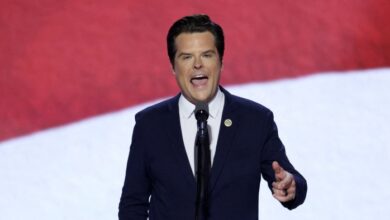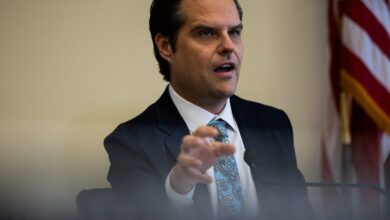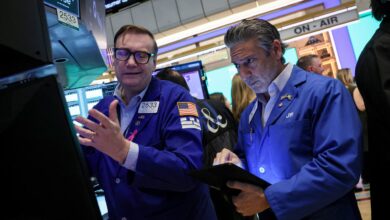How will NASA bring back two American astronauts stranded in space?
The return to Earth of two US astronauts stranded on the International Space Station will be delayed until February because of problems with the new Boeing spacecraft designed to take them home.
NASA has decided that Sunita Williams and Barry Wilmore should replace return on a ship carried out by Elon Musk’s SpaceX, extending their planned eight-day mission to eight months.
The decision not to use Boeing Starliner has put the pair out of commission, raising questions about the company’s space ambitions at a time when its core commercial aircraft operations are under pressure. It has focused attention on the difficulties of crew space flight as countries and entrepreneurs, including Musk, launch missions to the Moon and Mars.
What happened and what exactly went wrong?
The original plan was for the Starliner to take Williams and Wilmore to the ISS, dock with them, and then bring them home after their brief mission. But NASA announced over the weekend that it would return the spacecraft to Earth without the astronauts. This would allow NASA (NASA …)) and Boeing will collect more data on Starliner without “taking on more risk than necessary” to the crew, the agency said.
The plan comes after weeks of work to address issues discovered during a June outbound mission. NASA said the spacecraft suffered three helium leaks and five reaction control system thrusters failed during its approach to the ISS.

Steve Stich, NASA’s commercial crew program manager, said the move to an alternative plan was due to “a higher level of certainty needed to conduct a crewed return flight.”
The decision came after negotiations between NASA and Boeing that an agency official described as “tense.” NASA and the company had different views on the level of uncertainty in the data, Jim Free, NASA’s deputy administrator, said at a weekend news conference.
Boeing said its focus was on safety, adding that it was “executing the mission as directed by NASA” and preparing for a “safe and successful” unmanned return to Earth.
What is the new plan and how will astronauts be supported?
NASA’s new plan is to use a SpaceX Dragon spacecraft to bring Williams and Wilmore back. Until then, they will work alongside the regular ISS crew for the remainder of their extended stay. The space station is supplied by both manned and cargo spacecraft, the latest of which docked this month.
Williams and Wilmore have backgrounds in the US Navy and previous space experience, including ISS missions. Williams served as ISS expedition commander and Wilmore piloted the space shuttle Atlantis to the space station in 2009. They are trained in spacewalks, robotics and other skills needed to contribute to regular ISS mission work, NASA said.


“SpaceX stands ready to support @NASA in any way we can,” president and CEO Gwynne Shotwell posted on X.
On Monday, Musk posted that the company is “currently preparing” for the flight of the Polaris Dawn mission, scheduled to launch Tuesday to conduct the first commercial spacewalk. The project is funded by Jared Isaacman, the billionaire founder of payment processor Shift4 Payments, who is one of the four crew members.
What are the risks and will this be the longest human flight in space?
Space travel is physically and mentally demanding. NASA identifies “five dangers” Any manned mission to Mars will face challenges — and all astronauts will face them to varying degrees. There’s space radiation; isolation and confinement; distance from Earth and the supply challenges it creates; changes in gravity and the impact on the body; and maintaining a safe ecosystem in rockets and space stations.
Potential damage to the body from radiation from galactic cosmic rays and solar storms is a major challenge to space exploration. The ISS’s low Earth orbit — at medium altitude about 400km — meaning it receives some natural protection from the planet’s magnetic field. According to NASA, the facility also uses artificial shielding, such as plastic polyethylene, around areas like bedrooms and kitchens.
If Williams and Wilmore return as planned in February, their unbroken stay won’t be for very long. American astronauts Frank Rubio and Russian astronauts Sergey Prokopyev and Dmitry Petelin ended their 371-day ISS mission last year. They were delayed for similar reasons as Williams and Wilmore, after the Russian Soyuz capsule that carried them aboard suffered mechanical problems and was replaced by another ship for the return journey home.
The record for uninterrupted time in space belongs to Russia’s Valery Polyakov, who spent 438 days on a mission to Russia’s Mir space station in 1994-95.
What does this mean for Starliner and Boeing?
NASA’s decision to turn to SpaceX to fly astronauts home is an embarrassing setback for Boeing, capping a difficult eight months for the U.S. manufacturer, which has come under intense regulatory scrutiny over the quality and safety of its commercial aircraft manufacturing following the mid-air explosion of a door panel on a 737 Max in January.


Boeing’s defense and space business is also struggling financially, in part because of fixed-price contracts with NASA and the Pentagon. The division is set to lose $1.7 billion in 2023.
The Starliner program itself is years behind schedule and over budget, even though it accounts for only a small fraction of Boeing’s total revenue.
The decision on what to do with the program and whether to continue investing now rests with new CEO Kelly Ortberg, who took over this month.
“This may be another blow to the company’s reputation, but serious customers will realize that Starliner’s woes are the result of a dysfunctional culture that will take time to undo,” said Richard Aboulafia, managing director at AeroDynamic Advisory, a consulting firm.
What does this mean for manned flight and space exploration?
NASA is unlikely to abandon Boeing. The agency designed its commercial crew program a decade ago with the goal of having two US companies compete to fly its astronauts into space.
After the retirement of the space shuttle fleet, NASA awarded fixed-price contracts to Boeing and SpaceX to transport astronauts in 2014. On the cargo side, SpaceX and Northrop Grumman both have contracts with NASA to deliver supplies to the ISS.
Boeing has previously played a key role in NASA’s manned space missions, including the Apollo moon landings. Boeing secured an initial $4.2 billion contract from the agency, compared with SpaceX’s $2.6 billion in 2014—though Musk’s company has since received orders. Another potential contender is Sierra Space Corp., which lost out to Boeing and SpaceX a decade ago, but has been plagued by delays in launching the cargo version of its vehicle.
More broadly, the Starliner case shows the disruption that mechanical failures can cause even on a mission relatively close to Earth. The dangers would be magnified on missions to the Moon and especially to Mars. A trip to the Red Planet could take nine months.
Photo press of Ian Bott And Aditi Bhandari




